Tomato is one of the world’s most essential and widely grown food crops. It is a warm-season vegetable. Tomato plants cannot tolerate cold and humidity. Tomato belongs to the Solanaceae family. The Tomato is native to Peru and Mexico. There are about 1000 varieties of Tomatoes in India. China is the leading Tomato producer in the world, followed by India and Turkey. Tomato season in India lasts throughout the year. Tomato season in India is mainly at the beginning and end of the year.
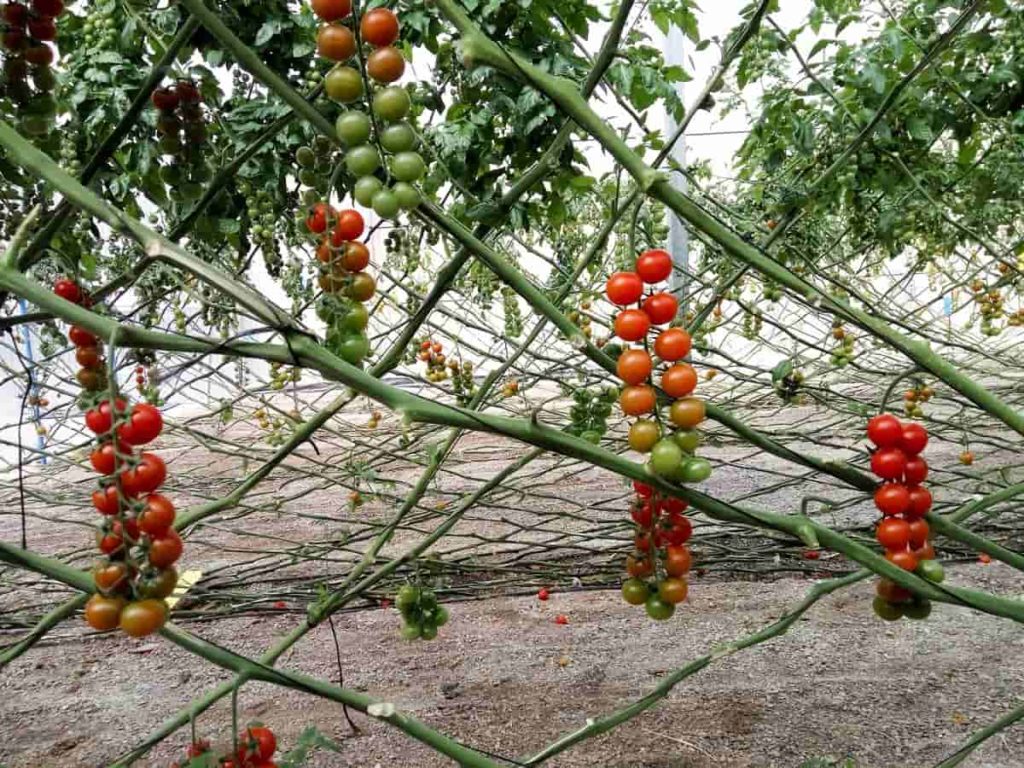
Tomato farming business plan
Tips to succeed in the Tomato farming business
Most commercial Tomato growers start the crop from seed (hybrid) in an indoor protected environment. While they wait for the young plants to grow and be ready for transplanting (usually 30-50 days), they prepare the field. They till the land and remove the residues of previous cultivation. Some farmers apply black plastic film to the ground. This plastic film not only helps to warm the soil but also controls weeds. Furthermore, Tomato growers design and set up an irrigation system before planting, usually drip irrigation. The most critical success factors are:
- Deep, well-drained soil
- High-yielding and resistant varieties
- Adequate stalking
- Disease control (blights and canker)
What is the best way to grow Tomatoes?
Tomatoes are usually cultivated twice a year. One starts in July-August and continues till February-March. The second starts in November-December and continues till June-July. A nursery is made from seeds to start Tomato cultivation. Nursery plants are ready for field planting in about a month. About 15000 plants are planted on one hectare of land. After about 2-3 months of Tomato planting in the field, fruits appear. The growing season of Tomatoes is 9-10 months.
Machinery and equipment needed for Tomato farming business
The machinery and equipment required for your Tomato farming business will depend on the scale of your operation. Machinery and equipment required include tractors, harvesters, boom sprayers, fertilizer spreaders, irrigation equipment, diggers, scales, bins, etc. Most farmers usually rent large machinery, such as tractors, when they want to use them instead of buying them as they are expensive.
Irrigation systems may also require grid hydroelectric power, standby diesel generators for use during power outages, or solar-powered irrigation systems. Especially farmers in rural areas who do not have modern farming tools use animal-made tools for Tomato cultivation. The higher the level of mechanization in your Tomato farm, the more efficient your operations will be, and the more profitable your Tomato farming business will be. A Tomato farming business plan should include the cost of acquiring and renting various machinery and equipment.
Farm practices for starting a Tomato farming business
When running a Tomato farming business, you must hire part-time farm workers when needed. Their duties include planting Tomato seeds, planting Tomato plants, fertilizer application, pruning, plowing, pruning, herbicides and pesticides. Part-time farm workers will be paid according to the number of days worked.
It would help if you also had supervisors, farm managers, finance and accounting staff, and logistics staff, depending on the scale of the Tomato business. The wages and salaries of your workers must be included in your Tomato farming business plan.
Preparation of land for tomato cultivation
You should prepare the land for good cultivation by plowing or digging well 2 to 3 times. Finally, add organic manure and 10 kg of carbofuran granules or 200 kg of neem-cake to the soil.
Transplantation
Transplantation is done in small flat beds or shallow furrows, depending on the availability of irrigation. In heavy soil, it is generally transplanted in ridges and is beneficial to plant seedlings during rains.
In case you missed it: How to Start Tomato Farming in the USA: A Step-by-Step Production Guide to Planting to Harvesting
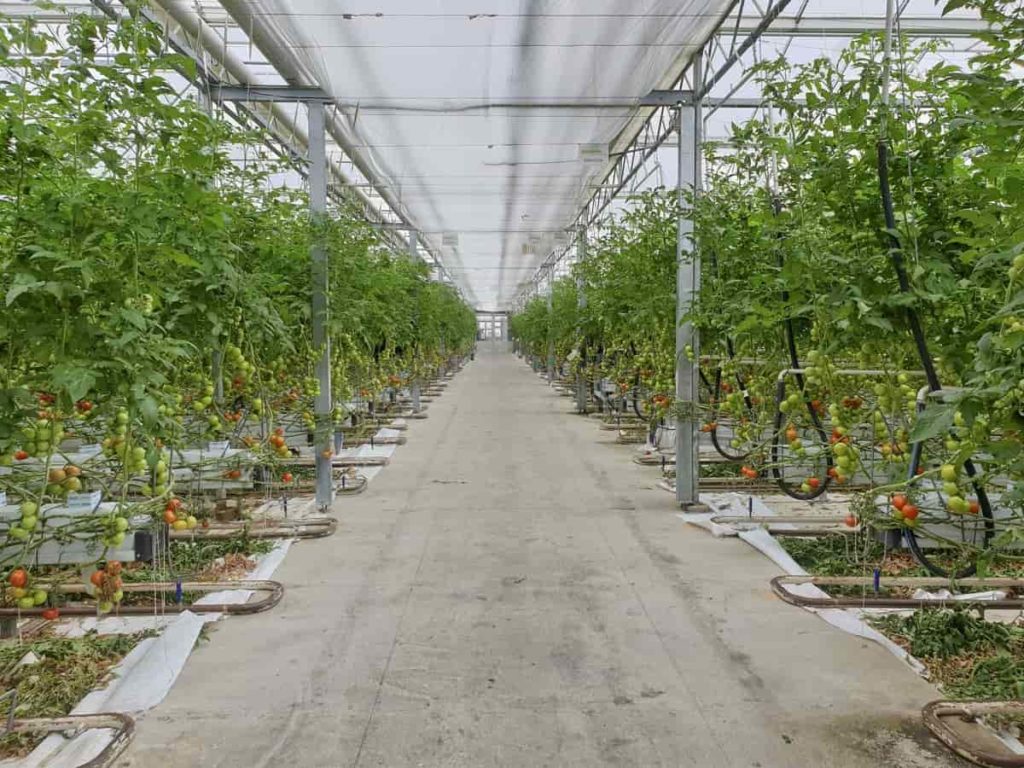
Irrigation
Tomato plants require adequate moisture during their growth. Drip irrigation is most suitable for maintaining a constant supply of moisture. You will need to arrange the first watering immediately after transplanting the plants. Daily irrigation is necessary when the plants are young.
Weed and pest control
For weed control, you can use intercultural operations like hand-handing, weeding, mulching, and staking as a general system. Weed control can be achieved using herbicides, plastic mulch, and a good crop rotation system. Several pre-plant and post-emergence herbicides are available for Tomatoes, depending on the specific weed problem and the stage of Tomato growth. Early cultivation can help reduce weed problems if infestation levels are light. Insects, especially the Colorado potato beetle, can significantly affect Tomato production.
Early control of adult Colorado potato beetles can prevent crop damage. Aphids, corn earworms, European corn borer, armyworms, thrips, whiteflies, spider mites, and fruit flies can also cause crop damage. Monitoring the pest population with traps or weekly scouting will help determine if you should use an insecticide and how often to spray. Many Tomato diseases can cause crop loss, including bacterial canker, leaf blight, viruses, early blight, anthracnose, and bacterial soft rot.
Several fruit disorders are also caused by excess soil moisture or weather conditions. These include cat face, spot ripening, gray wall, yellow shoulders, sunburn, sun scald, and fruit cracking. Plant diseases and fruit defects can be treated by buying fungicide disease-resistant varieties, maintaining adequate plant nutrition, rotating crops, and growing in well-aerated and well-drained soil. Tomato plants can also be grown organically, but this will require a high level of management and supervision to succeed economically.
Harvesting
Harvesting Tomatoes in the fresh market is labor intensive and requires multiple pickings. Depending on plant variety, maturity, and market value, Tomatoes are harvested four to six times during the growing season. Tomatoes for the wholesale market are picked at the mature green-to-ripe stage to prevent overripe fruit during shipping and handling.
Markets like farmers’ markets, roadside stands, or other live markets will allow you to ripen Tomatoes on the vine before harvesting. After harvest, growers must check Tomatoes for size, color, and defects to ensure the marketing of a high-quality product.
Production methods for Tomato farming under safe cultivation
Tomatoes grow best in well-drained soils with good air and water infiltration rates. Before planting Tomatoes, you should have a soil test done. Tomatoes need a constant supply of moisture throughout the growing season. However, excess water during growth, especially after fruit set, can increase fruit susceptibility to cracking (both l and concentric), reducing fruit quality and yield.
It can be grown in various soils ranging from sandy loam to clay, black clay, and red clay with adequate drainage. Avoid planting in highly acidic soils. Light soils are beneficial for early crops, while clay loam and silt soils are beneficial for heavy production.
Protected cultivation of Tomato in shade net
During summer, hybrid Tomatoes under a 35% shaded row planting system (80 x 40 x 60 cm – between pairs, rows, and plants) can be grown with a basal application of 50 kg N and K. Apply 250 kg P/ha and 200 kg N and K through straight fertilization.
Protected cultivation of Tomato in polyhouse
During the rainy season, indeterminate Tomato hybrids are grown in a medium consisting of FYM: composted coir peat: sand (2:1:1) with 50kg each of the NPK/ hectare is used as a natural fertilizer. 250 kg NPK as water soluble and direct fertilizer by fertigation with black polyethylene mulch (50 microns).
In case you missed it: High Yield Tomato Varieties in India: A Farmer Guide for Good Profits
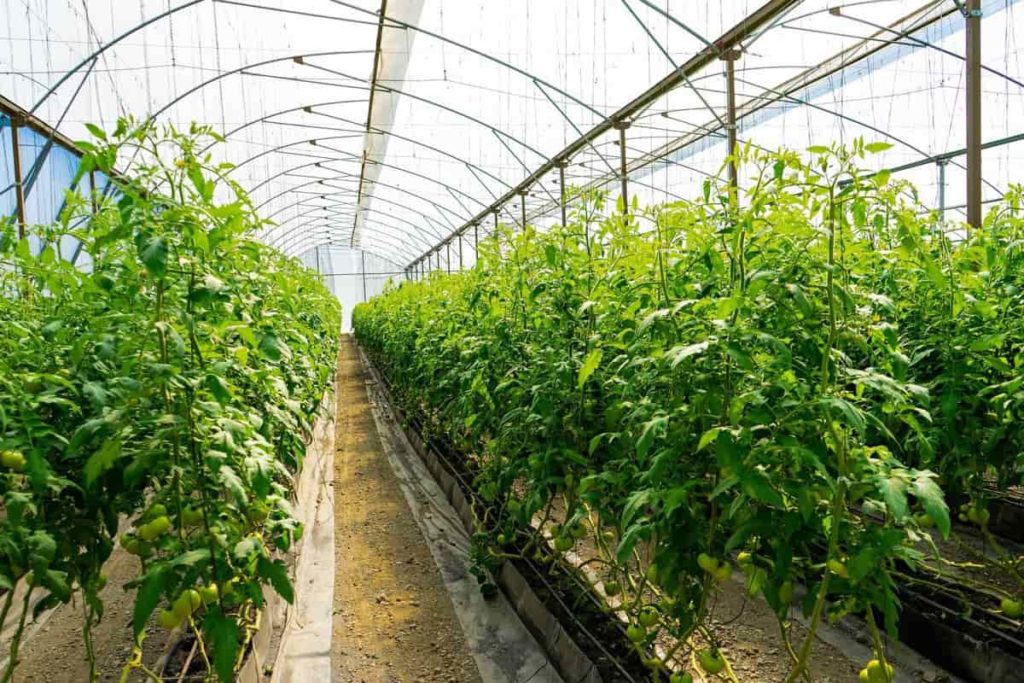
Protected cultivation of Tomatoes in the greenhouse
Greenhouse farming is the most efficient way to grow Tomatoes. Tomatoes are grown in greenhouses where water, humidity, temperature, and soil pH are closely monitored. Under this method, Tomato yield is higher than in open field cultivation. The incidence of pests and diseases is also reduced under this method.
Greenhouse production is more expensive than producing the same crop in the open field. The most crucial cost determinants are the depreciation of structures and equipment, labor, energy, and variable costs such as plant material, substrate, and fertilizer. Tomatoes can be grown in any greenhouse, provided it is tall enough to manage and train the plants vertically. High-light transmission is significant and varies between 70% and 81% in modern greenhouses.
The Tomato plant is a short-lived perennial and can be maintained for a year or more in favorable conditions. However, most production schedules allow at least one month between crops for cleaning and pest control. The time chosen to be out of production is usually based on unfavorable prices or environmental conditions.
How to operate a Tomato farm
Key activities
The critical activities in Tomato cultivation are variety selection, nursery development, transplanting, watering, weeding, pest and disease control, harvesting, and post-harvest handling.
Farm operator
Due to the technical nature of Tomato farming, the farm operator should be assisted by farmers and experts in carrying out critical management practices. Ideally, the operator should have experience in Tomato cultivation.
Supply chain
Buy certified varieties of disease-resistant seeds. Growers should consider Tomatoes’ pest and disease-susceptibility when procuring seeds. Seeds should be procured from certified distributors and agro-dealer shops.
Things to consider in the Tomato farming business for beginners
Commercial Tomato farming is a profitable vegetable farming business. However, to ensure maximum profit from production, you should maintain some basics.
- Variety selection plays a significant role in the success of a Tomato farming business.
- You should choose the right one that suits the other climate and soil conditions.
- Planting should be started at the right time of the season.
- You will need to follow proper planting and crop management practices.
- Proper soil condition increases yield per hectare.
- Soil testing and treatment are recommended.
- For Tomato cultivation, you should manage proper irrigation.
- Proper fertilizer and pest management are required.
- Planning is required before marketing. Most importantly – it would help if you prepared a financial plan before starting Tomato farming.
- Tomatoes can be cultivated in many ways. Although open field farming is the most popular, other methods such as polyhouse farming, greenhouse farming, and hydroponics Tomatoes are being explored worldwide. If done correctly, Tomato cultivation has vast opportunities in both domestic and export markets.
A step-by-step guide to starting a Tomato farm business plan for beginners
Step 1: Business goals
It is essential to understand that people start businesses for several reasons:
- Following a passion;
- Financial independence;
- Doing something during retirement;
- It has a social impact, etc.
- Take some time to think about starting a Tomato business.
In case you missed it: Top 24 Steps to Boost Tomato Yield: How to Increase Production, Quality, and Size
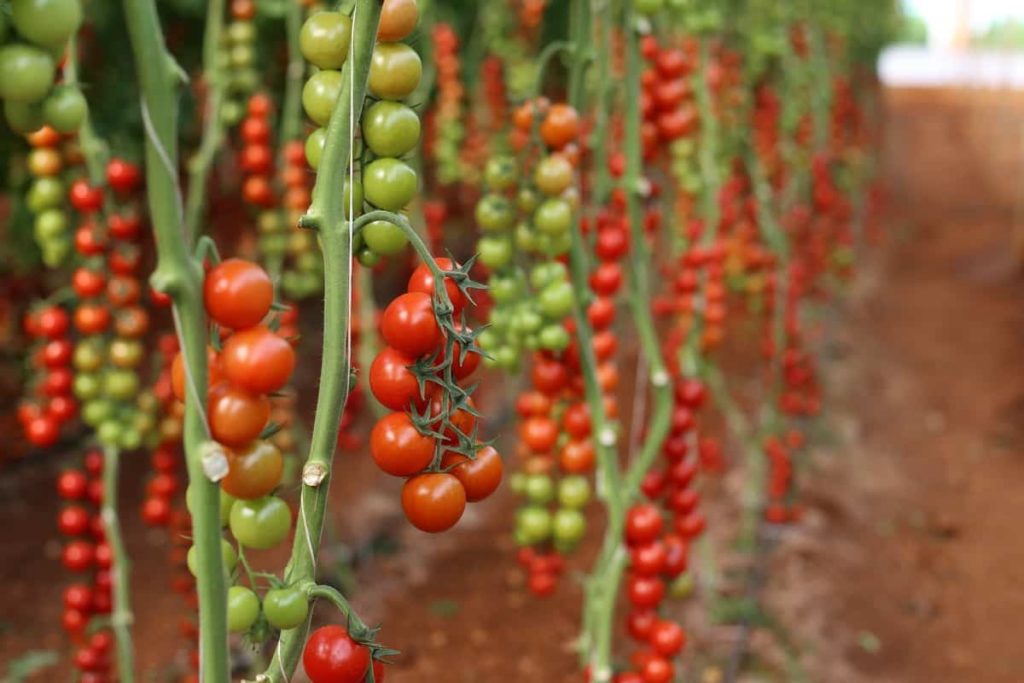
Step 2: Market research
Market research is fundamental for existing business owners to help shape business and strategy; thus, anything you build anywhere will be successful. There are many failed businesses on the continent; opportunities must be aligned with local realities. Assess customer behavior and economic trends to help you improve your business strategy.
Use competitive analysis to determine what is missing in the market and how you can operate your business differently. You can gather competitive information by observing market transactions, conducting surveys, focus groups, and interviewing potential customers. Through careful market research, you will be able to zoom in on your target customers and determine a sales strategy that will be successful.
Step 3: Business plan
Writing a business plan should be part of your planning. A properly prepared business plan will increase your confidence in your business idea by answering critical risk and opportunity questions and providing a roadmap for achieving your business goals. But you don’t have to complete a business long or entirely before starting your own. However, it tries to answer who, what and how you plan to make money.
Step 4: Business identity
Business Name and Domain: Invest considerable time and care in choosing a business name and domain name (if applicable). These will be key to how customers find and remember you.
Business Structure: Decide which legal structure is best for your business: sole proprietorship, partnership, limited liability company (LLC), or corporation. This is important because it affects your taxes, personal liability, your ability to get funding, etc. Consider consulting an attorney and accountant to help you make your decision.
Business Location: Location depends on your business; it can make or break your business. You may need to consider issues such as foot traffic, parking, distance from suppliers and customers, ordinances, utilities, crime, convenience, and close competition.
Step 5: Marketing
There are some basic marketing alternatives available to the Tomato grower:
- Wholesale markets
- Cooperatives
- Local retailers (grocery stores)
- Roadside stands
- Choose your operations
- Processing firms
In case you missed it: Tomato Farming In Karnataka, Areas, Seasons, Yield
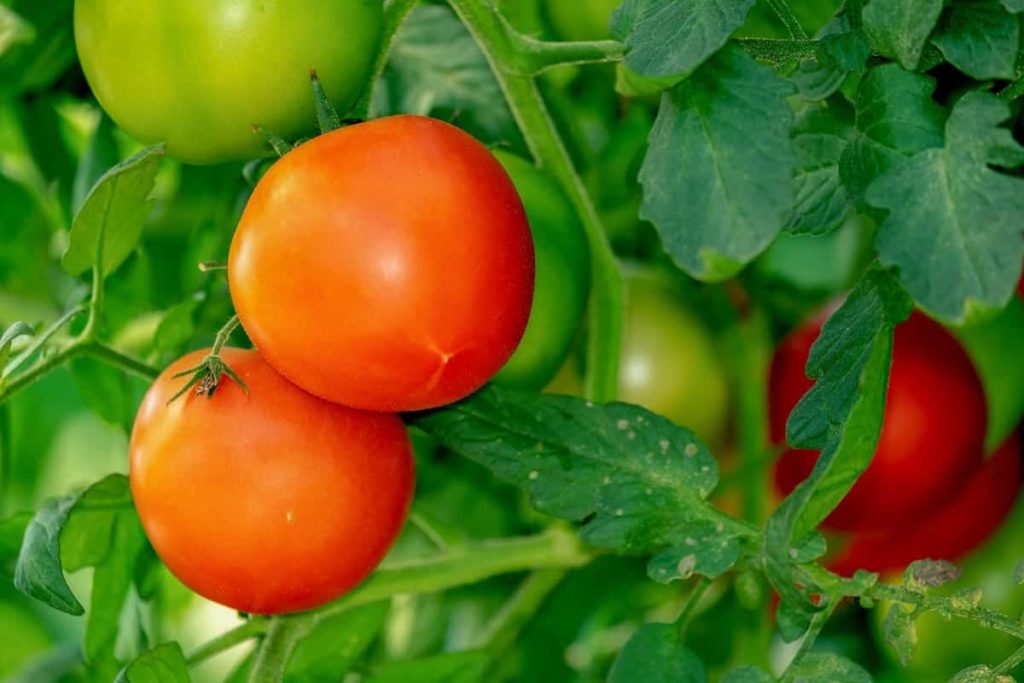
Options are available for processing Tomatoes. In wholesale marketing, you or a shipper can take your crop to market. Shippers usually sell and transport Tomatoes at a predetermined price. Marketing cooperatives typically use daily pooled costs and prices, which spread price fluctuations across all participating producers. Local retailers are another potential market, but you should take the time to contact production managers and provide stores with high-quality Tomatoes when needed.
Roadside stands either own or another grower’s, and do-it-yourself operations offer opportunities to charge higher prices for your Tomatoes than wholesale. There may be additional costs for maintenance and additional costs for providing the service to you. By picking your operations, you save on crop costs, but you must also be willing to accept some waste and the risks of people visiting your farm.
Tomato yield per hectare
Nitrogen and potassium are fundamental to obtaining high marketable yields. The correct form of nitrogen is essential – ammonium can limit growth and adversely affect quality. Yield per hectare varies greatly with variety and season. The yield of outdoor Tomato cultivation on stalked crops averages 60-100 tons per hectare.
Determinate varieties, however, generally do not yield more than 30–50 tons per hectare due to their short crop cycle. Industrial outdoor Tomatoes from experienced professional growers typically produce 60-80 tons per hectare. These are average yields, and there are impressive deviations in many cases. Tomatoes are collected and classified according to size, shape, and overall condition.
They are then moved to cool but not frozen (13°C) storage areas to avoid possible weight loss. Tomatoes can be stored in excellent conditions (4°C), provided they are collected during their late stages of ripening. If not, the Tomatoes will fail to reach the desired level of maturity. They will probably not achieve intense red color because the production of the substances responsible for giving the fruit its red color stops at low temperatures.
In case you missed it: Tomato Seed Germination, Time Period, and Procedure
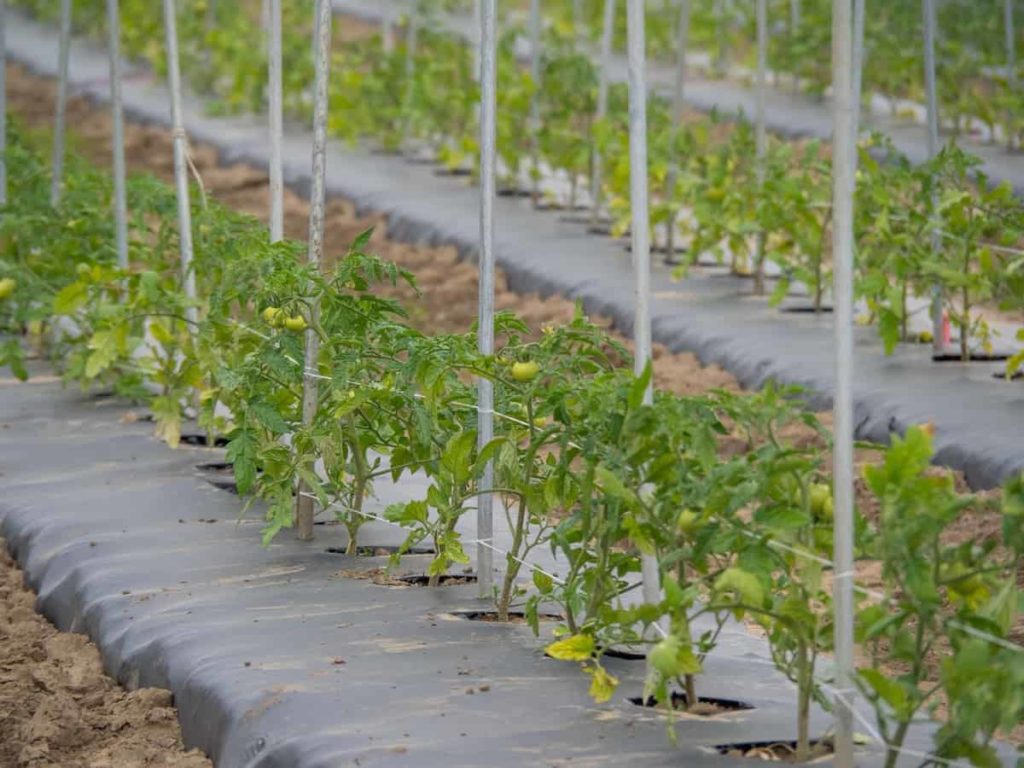
Conclusion
The Tomato farming business is one of the most profitable agribusiness ideas. Tomatoes are consumed widely- they can be eaten in various ways, including raw, in many dishes and sauces, and even in drinks. Tomatoes also use a food processor. The Tomato is an herbaceous, sprawling plant with a weak woody stem 1-3 meters tall.
Tomato farming is a profitable business that provides millions of people income. Still, there are some essential things you need to do before you venture into the Tomato farming business. You have to decide how many hectares of land you want to grow, what kind of Tomatoes you will grow, what season you will plant your Tomatoes in, and your target market will be affected by is, and size of your target market.
- Economical Aquaculture: A Guide to Low-Budget Fish Farming
- 15 Common Planting Errors That Can Doom Your Fruit Trees
- How to Make Houseplants Bushy: Effective Tips and Ideas
- Innovative Strategies for Boosting Coconut Pollination and Yield
- Pollination Strategies for Maximum Pumpkin Yield
- The Complete Guide to Chicken Fattening: Strategies for Maximum Growth
- Natural Solutions for Tulip Problems: 100% Effective Remedies for Leaf and Bulb-Related Issues
- Revolutionizing Citrus Preservation: Towards a Healthier, Greener Future
- Natural Solutions for Peony Leaf and Flower Problems: 100% Effective Remedies
- Maximizing Profits with Avocado Contract Farming in India: A Comprehensive Guide
- Natural Solutions for Hydrangea Problems: 100% Effective Remedies for Leaf and Flowers
- The Ultimate Guide to Choosing the Perfect Foliage Friend: Bringing Life Indoors
- From Sunlight to Sustainability: 15 Ways to Use Solar Technology in Agriculture
- The Ultimate Guide to Dong Tao Chicken: Exploring from History to Raising
- The Eco-Friendly Makeover: How to Convert Your Unused Swimming Pool into a Fish Pond
- Mastering the Art of Delaware Chicken Farming: Essentials for Healthy Backyard Flocks
- 20 Best Homemade Fertilizers for Money Plant: DIY Recipes and Application Methods
- How to Craft a Comprehensive Free-Range Chicken Farming Business Plan
- Brighten Your Flock: Raising Easter Egger Chickens for Beauty and Bounty
- How to Optimize Your Poultry Egg Farm Business Plan with These Strategies
- Subsidy for Spirulina Cultivation: How Indian Government Schemes Encouraging Spirulina Farmers
- Ultimate Guide to Raising Dominique Chickens: Breeding, Feeding, Egg-Production, and Care
- Mastering the Art of Raising Jersey Giant Chickens: Care, Feeding, and More
- Ultimate Guide to Raising Legbar Chickens: Breeding, Farming Practices, Diet, Egg-Production
- How to Raise Welsummer Chickens: A Comprehensive Guide for Beginners
- How to Protect Indoor Plants in Winter: A Comprehensive Guide
- Ultimate Guide to Grow Bag Gardening: Tips, Tricks, and Planting Ideas for Urban Gardeners
- Guide to Lotus Cultivation: How to Propagate, Plant, Grow, Care, Cost, and Profit
- Agriculture Drone Subsidy Scheme: Government Kisan Subsidy, License, and How to Apply Online
- Ultimate Guide to Raising Araucana Chickens: Breed Profile, Farming Economics, Diet, and Care
- Bringing Hydroponics to Classroom: Importance, Benefits of Learning for School Students
- Ultimate Guide to Raising Polish Chickens: Breed Profile, Farming Economics, Diet, and Care
- Ultimate Guide to Raising Australorp Chickens: Profile, Farming Economics, Egg Production, Diet, and Care
- Silkie Chicken Farming: Raising Practices, Varieties, Egg Production, Diet, and Care
- Sussex Chicken Farming: Raising Practices, Varieties, Egg Production, Diet and Care
- Homemade Feed Formulations for Livestock: Discover Cost-effective Starter to Finisher Feed Recipes